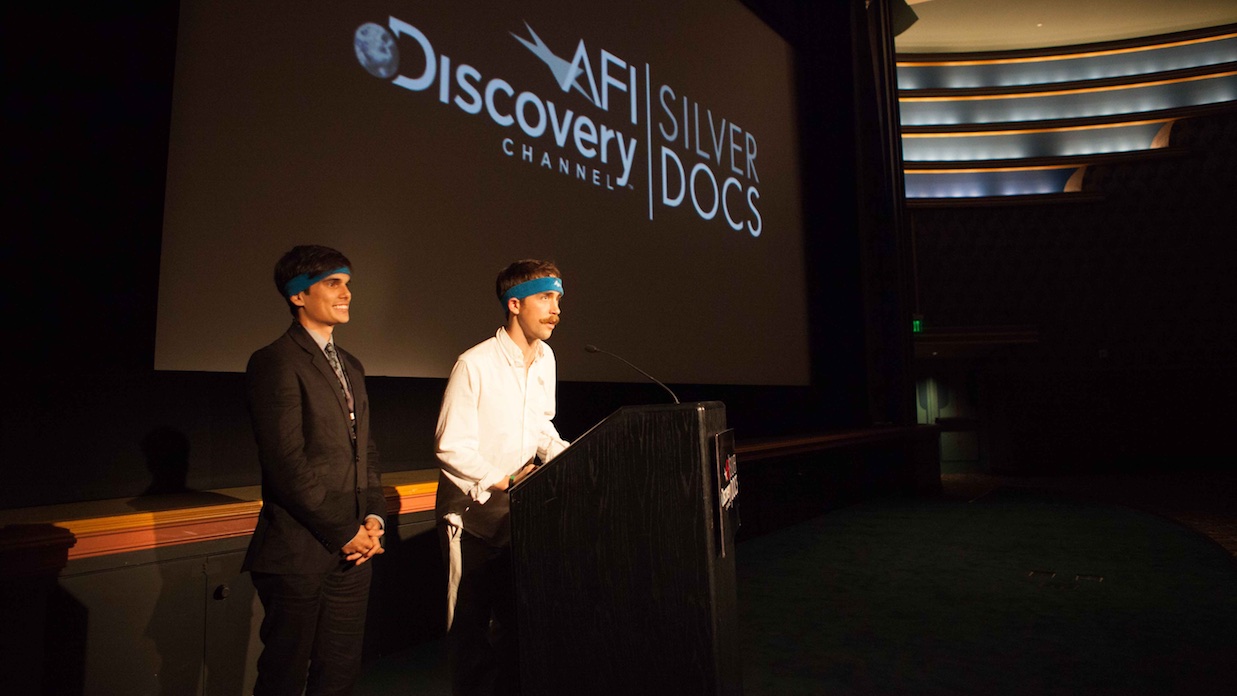 Back to selection
Back to selection
Five Ways to Build a Powerful Financing and Distribution Network for Your Film
 Christopher Rufo and Keith Ochwat
Christopher Rufo and Keith Ochwat You’ve heard it said before: “It’s not what you know, it’s who you know.”
As an independent filmmaker, your network — the relationships you forge with individuals, institutions and media in your niche — is what will drive every step of your film’s distribution. After all the hard work of getting your film made, you’ll need a tight-knit group of supporters and evangelists who believe in your work and will help you build an audience.
For our documentary Age of Champions, which tells the story of five competitors up to 100 years old who compete in the Senior Olympics, our network was the engine that powered our success. It allowed us to spend more than two years distributing our film and helped us generate more than $1.5 million in revenues.
Networking involves much more than attending cocktail receptions or shaking hands at festivals. It’s about actively connecting with the people and organizations who share a passion for your work. It’s about creating partnerships throughout the entire process of funding, marketing, and distribution. In short, your network is the catalyst that will make things happen for your film.
As we cover in our Filmmaker.MBA online course, here’s our five-step guide to building your network of partners to help you maximize your film’s exposure and impact:
1. Focus on Your Niche
Your niche is the smallest, most passionate, and highest impact core of people who would love your film. These are the people who will watch your film for free on Netflix, then buy a DVD, host a screening in their community, and spread the word to their friends.
You’ll want to pinpoint the smallest niche audience you can find based on the subject matter of your film. For example, with our Senior Olympics documentary, Age of Champions, we discovered our audience by reaching out to nonprofits and businesses in the senior health community. We made phone calls to organizations, attended conferences, and started selling DVDs and community screening kits to senior centers, retirement homes and hospitals. They loved the film and wanted to share it with their local communities. Eventually, we discovered that our core audience was “female professionals ages 40 to 65 who worked in the senior health.” You should be as specific as possible — and it’s important to keep in mind that your core audience might not be what you thought when you started your project.
2. Reach Out to Institutions
Getting an institution to partner with you and promote your film can be one of the most powerful ways for getting your film out into the world. As soon as possible, you should make a list of all the important nonprofits, educational institutions, companies, and foundations in your niche.
Pay particular attention to mission-driven institutions that have connections to a potential audience with an interest in the same topic as your film. For example, if your film is about endangered whales, you’ll want to target organizations that are involved in marine conservation, animal rights, and environmental issues, and marine biology. The simplest way is to gauge their interest is to call and ask if they’d be interested in sharing your film with their members.

3. Attend a Conference
Conferences are the secret shortcut to building your network quickly and efficiently. Although they can be a little awkward, you’ll be able to network face-to-face with the most influential people in your niche. The process is simple: do some research and find the biggest annual gatherings of people in your niche, book your ticket, and set up as many meetings as possible in advance.
For our upcoming documentary about three failing American cities, America Lost, we attended three public policy conferences and made connections with potential funders who eventually donated more than $500,000 towards production of the film. Our process was simple: we contacted the conference organizers six months in advance and pitched them on participating on a panel and sharing the trailer for our work-in-progress film. Six weeks before the conference, we asked the organizers for a complete attendee list and reached out to potential funders to set up coffee meetings during the event. We met one funder at Dunkin’ Donuts across from the Convention Center in Denver, and he committed to writing a $100,000 check on the spot.
By participating as a speaker, the conference organizers usually waived the attendance fee, so we just had to book our own transportation and accommodations. Despite the time and expense of attending these conferences, they paid out one-hundredfold. Making connections in person was extremely important in solidifying relationships and opening doors. We could have never raised our full production budget without participating at conferences.
4. Reach Out to Influencers
You can partner with an influential person in your niche who’s passionate about your film’s message. This could be a thought-leader, author, speaker, or celebrity. The goal is to tap into their devoted network of fans and start a discussion of your film online. You can ask your celebrity to host an online screening of your film, appear in bonus content, or promote your film on social media—whatever’s the best way to engage their fanbase.
Stacy Peralta, the filmmaker behind the skateboarding documentary Bones Brigade, rallied the pro skateboarders in his film (including Tony Hawk) to promote Bones Brigade to their millions of followers on Twitter and Facebook. After two months of a sustained social media campaign, Stacy added 46,000 fans to his mailing list and made nearly four times as much money as he was offered for a conventional distribution deal at Sundance.
Don’t worry if you aren’t already as connected as Stacy Peralta — with a little sleuthing and hard work, you can track down almost anyone. For Age of Champions, we connected with “stars” like author Dan Buettner (Blue Zones) and tennis great Andre Agassi by cold-calling their organizations and finding advocates within them who wanted to help promote our film. These advocates talked with their bosses and helped us secure social media posts on their behalf that drove awareness and traffic to our website.
5. Reach out to media
You can create buzz around your film by pitching your story to media in your niche. This could mean blogs, websites, podcasts, or video sites. Approach it like a typical PR campaign — reach out to the publications, provide them with a good story, and give them relevant content from your film. You’ll find that niche media are always looking for stories and can connect you with their readers.
The filmmakers behind Indie Game: The Movie, a documentary about the making of video games, launched a niche media campaign well before they even finished their film. They created more than 150 blog posts over the course of two years and shared content with video game websites and fan pages. By the time they were ready to release the film, they had built an email list of more than 30,000 people and sold $150,000 in DVD pre-orders.
In our experience with Age of Champions, niche media delivered a much bigger audience than mainstream media. For example, we appeared on NPR’s Tell Me More and in the Alzheimer’s Association newsletter — to our great surprise, we received only a few hundred website visitors after our national NPR segment broadcast, compared to more than 10,000 visitors after the Alzheimer’s Association newsletter went out to their list. Remember: you don’t have to be in the New York Times to have a successful PR campaign, just “the New York Times of your niche.”
Christopher Rufo and Keith Ochwat have produced three documentaries for PBS and teach an online course about direct distribution at Filmmaker.MBA. To get their free 7-day email course, sign up now.
